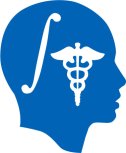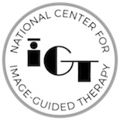Difference between revisions of "RSNA 2017"
| Line 53: | Line 53: | ||
=== Logistics === | === Logistics === | ||
| − | *Date: Tuesday November 28, 4:30pm-6:00pm | + | *Date: Tuesday November 28, 4:30pm-6:00pm | RC425 |
*Location: TBA | *Location: TBA | ||
Revision as of 19:01, 4 August 2017
Home < RSNA 2017
|

|

|
[Page under construction]
The events attended by SPL/NA-MIC representatives are listed in the calendar below. Note that due to a current known limitation of our infrastructure, you will need to manually navigate to the week of November 26 to see the relevant events.
Program events
The following events will be presented at the 103rd Annual Meeting of the Radiological Society of North America (RSNA 2017)
3D Slicer: an open-source software platform for segmentation, registration, quantitative imaging and 3D visualization of multi-modal imaging data
3D Slicer is an open-source software platform for medical image analysis and 3D visualization used in clinical research worldwide. The application provides clinical researchers easy access to over 350 modules and extensions that can be run on their Windows, Mac or Linux laptop computer with their own data. 3D slicer provides functionalities for segmentation, registration, automated measurements, quantitative imaging, DICOM interoperability and structured reporting as well as other utilities such as tool tracking and real-time data fusion for image-guided therapy. The platform integrates quantitative image analysis in the imaging workflow and facilitates the translation of innovative algorithms into clinical research tools. 3D Slicer is supported by a multi-institution effort of several NIH-funded consortia, which include the Neuroimage Analysis Center (NAC), the National Center for Image Guided Therapy (NCIGT), and the Quantitative Image Informatics for Cancer Research (QIICR). Funding from several other countries contributes to some aspects of the platform. Over the past 13 years, more than 3,600 clinicians and scientists have attended 3D Slicer training workshops worldwide. Since its release at RSNA 2011, the latest version of the software 3D Slicer version 4 has been downloaded over a quarter million times.
Teaching Faculty
- Sonia Pujol, PhD, Surgical Planning Laboratory, Harvard Medical School, Department of Radiology, Brigham and Women’s Hospital, Boston MA.
- Steve Pieper, PhD, Isomics Inc.
- Andrey Fedorov, PhD, Surgical Planning Laboratory, Harvard Medical School, Department of Radiology, Brigham and Women’s Hospital, Boston MA.
- Ron Kikinis, MD, Surgical Planning Laboratory, Harvard Medical School, Department of Radiology, Brigham and Women’s Hospital, Boston MA.
Logistics
- Date: Sunday November 26 -Friday December 1, 8:00am-5:00pm
- Meet-the-expert session: Sunday November 26, 12:30pm-1:30pm; Monday, November 27 to Thursday, November 30, 12:15-1:15pm
- Location: Lakeside Learning Center, McCormick Conference Center, Chicago, IL
3D Printing Hands-on with Open Source Software: Introduction (Hands-on)
“3D printing” refers to fabrication of a physical object from a digital file with layer-by-layer deposition instead of conventional machining, and allows for creation of complex geometries, including anatomical objects derived from medical scans. 3D printing is increasingly used in medicine for surgical planning, education, and device testing. The purpose of this hands-on course is to teach the learner to convert a standard Digital Imaging and Communications in Medicine (DICOM) data set from a medical scan into a physical 3D printed model through a series of simple steps using free and open-source software. Basic methods of 3D printing will be reviewed. Initial steps include viewing and segmenting the imaging scan with 3D Slicer, an open-source software package. The anatomy will then be exported into stereolithography (STL) file format, the standard engineering format that 3D printers use. Then, further editing and manipulation such as smoothing, cutting, and applying text will be demonstrated using MeshMixer and Blender, both free software programs. Methods described will work with Windows, Macintosh, and Linux computers. The learner will be given access to comprehensive resources for self-study before and after the meeting, including an extensive training manual and online video tutorials.
Teaching Faculty
- Michael W. Itagaki, MD, MBA Seattle, WA
- Beth A. Ripley, MD, PhD Seattle, WA
- Tatiana Kelil, MD, San Francisco, CA
- Carissa White, MD, Los Angeles, CA
- Anish Ghodadra, MD, Pittsburgh, PA
- Dmitry Levin, Seattle, WA
- Steve D. Pieper, PhD, Cambridge, MA
Logistics
- Date: Monday November 27, 8:30am-10:00am
- Location: TBA
Radiomics Mini-Course: Informatics Tools and Databases
Quantitative imaging holds tremendous but largely unrealized potential for objective characterization of disease and response to therapy. Quantitative imaging and analysis methods are actively researched by the community. Certain quantitation techniques are gradually becoming available both in the commercial products and clinical research platforms. As new quantitation tools are being introduced, tasks such as their integration into the clinical or research enterprise environment, comparison with similar existing tools and reproducible validation are becoming of critical importance. Such tasks require that the analysis tools provide the capability to communicate the analysis results using open and interoperable mechanisms. The use of open standards is also of utmost importance for building aggregate community repositories and data mining of the analysis results. The goal of this talk is to improve the understanding of the interoperability, as applied to quantitative image analysis, with the focus on clinical research applications.
Teaching Faculty
- Jayashree Kalpathy-Cramer, MS, PhD
- Justin Kirby, PhD
- Andriy Fedorov, PhD, Surgical Planning Laboratory, Harvard Medical School, Department of Radiology, Brigham and Women’s Hospital, Boston MA.
Logistics
- Date: Tuesday November 28, 4:30pm-6:00pm | RC425
- Location: TBA
